#10th century bce
Explore tagged Tumblr posts
Text
youtube
Da Ke Ding, September 23, 2016
Da Ke Ding, c. 1046 - 771 B.C.E. (late Western Zhou dynasty, China), bronze, 93.1 cm high (Shanghai Museum) Speakers: Dr. Kristen Chiem and Dr. Beth Harris. Created by Beth Harris and Steven Zucker. Smarthistory
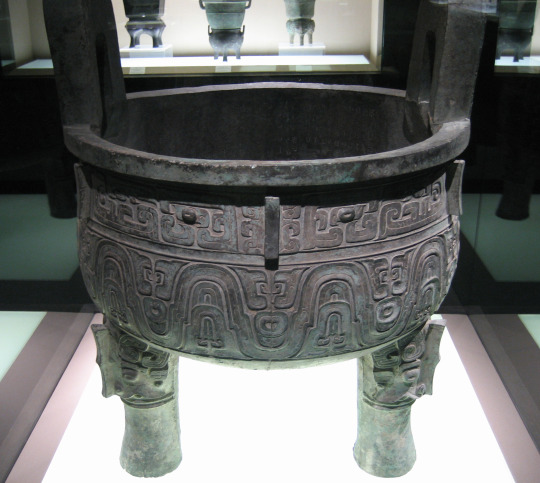
Da Ke ding (大克鼎), Western Zhou (1046–771 BC), China Bronze Height 93.1 centimetre (36.7 in); width 75.6 centimetre (29.8 in) (bore), 74.9-centimetre (29.5 in) (inside diameter); weight 201.5 kilogram (444 lb) Discovered in Famen Town, Fufeng County, Shaanxi in 1890. Collection of the Shanghai Museum
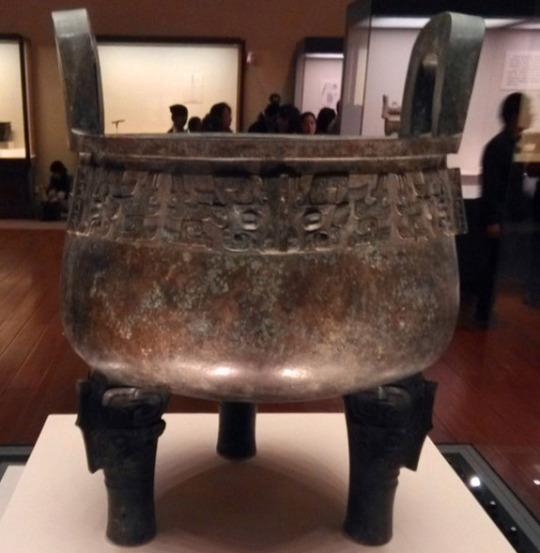
Da Yu ding (大盂鼎), early 10th century BC Western Zhou (1046–771 BC), China Bronze Height 101.9 cm (40.1 in), width 77.8 cm (30.6 in), weight 153.5 kg (338 lb) Discovered in Li Village, Jingdang Township, Qishan County, Shaanxi in 1849. Collection of the National Museum of China


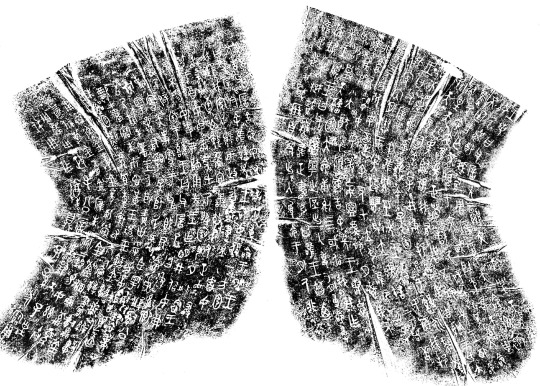
Mao Gong ding (毛公鼎), 857-828 BC Late Western Zhou (1046–771 BC), China Bronze Height: 53.8 cm, depth of belly: 27.2 cm, diameter: 47 cm, weight: 34.7 kg Discovered in Qishan County, Shaanxi in 1843. This "ting" cauldron has a wide, flared mouth, a linked ring motif decorating the rim, upright handles, and three hoofed feet. The inscription, which can be divided into seven sections, describes how when King Xuan of Zhou came to the throne, he was anxious to see the country thrive, and charged his uncle, the Duke of Mao, with governing the domestic and external affairs of state, big and small, and to do so conscientiously and selflessly. The inscription goes on to state that the King then presented the Duke with official vestments and gifts, and that this vessel was cast in order to record the honor given to the Duke for his descendants. Collection of the National Palace Museum, Taipei
#Western Zhou dynasty#Zhou dynasty#Chinese#art#art history#1st millennium bce#9th century bce#10th century bce#metal#bronze#language#taotie#pattern#design#archaeology#national palace museum#national museum of china#shanghai museum
3 notes
·
View notes
Text
This bronze shield is one of two found in Aberdeenshire, Scotland. The shields were probably deposited in a watery area between 950 and 750 BC as gifts to the gods.
More information here.

Bronze Age Shield, 1000 to 800 BCE, National Museums Scotland, Edinburgh
83 notes
·
View notes
Text
A little wistful about not writing BCE and CE anymore tbh
#everything’s so late#hearing about a 10th century manusciript feels so wrong#bring me back to her (5th century BCE)#capstone
3 notes
·
View notes
Text
I keep seeing a post going around saying that people should stop using the “colonized” names for cities in Israel/Palestine and should instead use the Arabic names.
I need you guys to be so for real right now, Hebrew is quite literally the indigenous language of the area. Like believe what you want about Israel, but Hebrew objectively and factually originated in that land. The earliest record of written Hebrew is the Khirbet Qeiyafa inscription, found near Beit Shemesh which dates back to the 11th-10th century BCE.
The first record of the name Jerusalem is in the Egyptian Execration Texts which date back to the 20th century BCE.
Arabic was introduced to the land in the 7th century CE. The first recorded use of “Al-Quds” was in the 9th century CE.
I could do this for every single ancient city in the land. Bethlehem, Hebron, Jericho, Jaffa, Beer Sheva, Acre, and Ashkelon all existed prior to the Arab conquests in the 7th century CE and the introduction of Arabic to the land.
The fact that we use the Hebrew names of these cities isn’t some conspiracy to make them sound “more Jewish”, the modern Hebrew names are direct descendants of the ancient Canaanite words for these places. Hebrew is the only surviving Canaanite language.
Believe what you want about Israel, but claiming that the Hebrew names for these cities are “colonial” names is a disgusting erasure of Jewish history in the land.
#israel#jews#jewish#hebrew#arabic#israel palestine conflict#palestine#I have a feeling I’m gonna get hate for this but honestly I had to say something#y’all are willingly spreading pan-Arabist propaganda
2K notes
·
View notes
Text
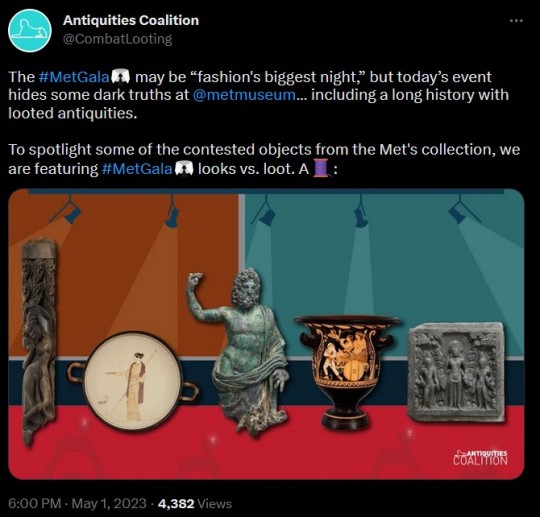
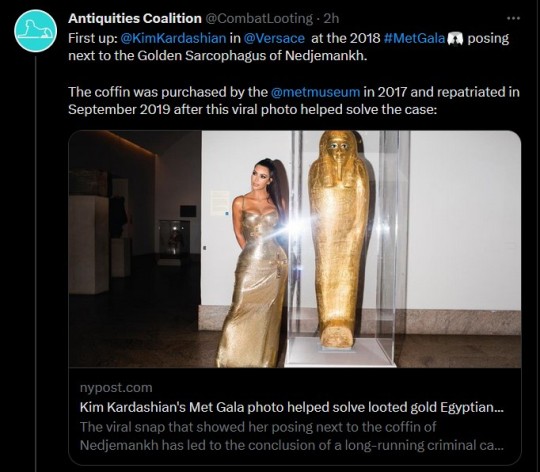
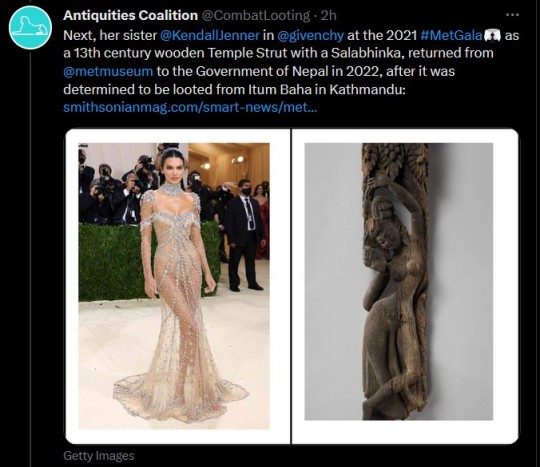
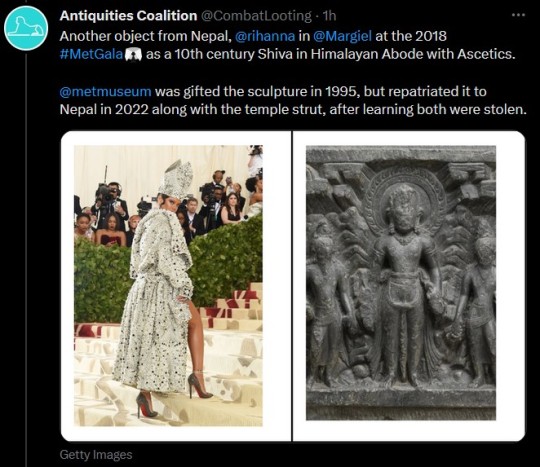

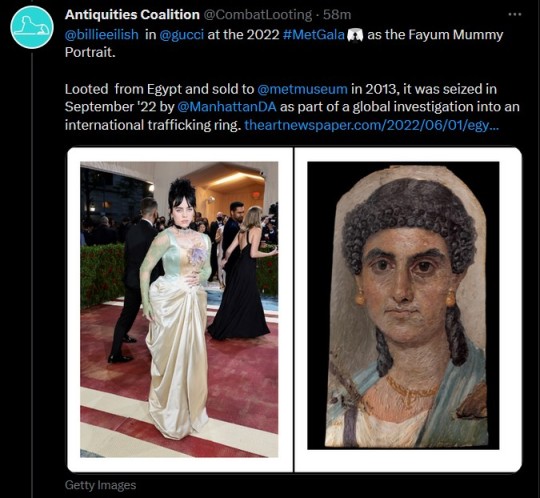
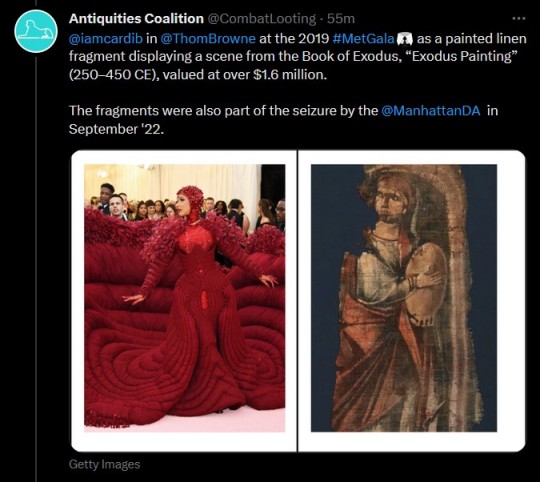
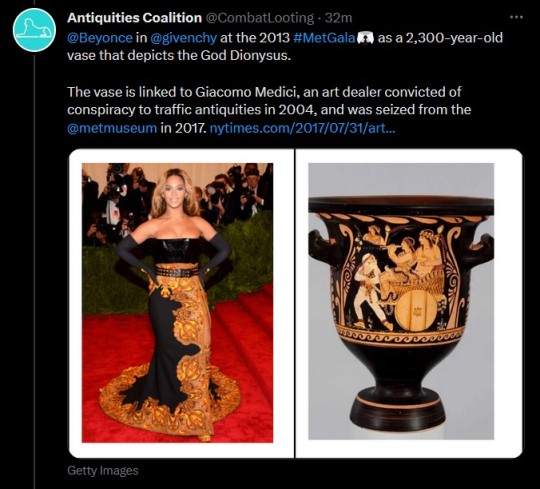
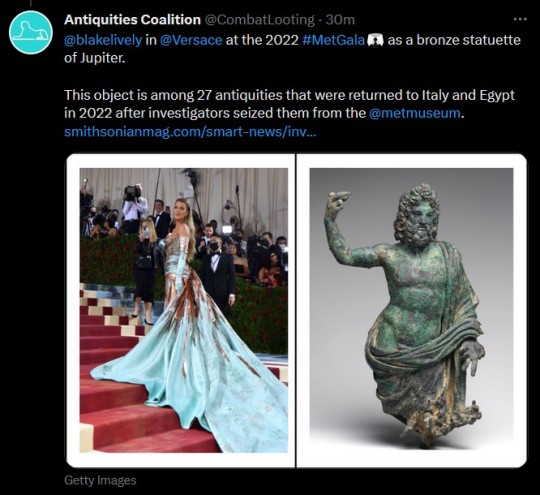
Looks vs. Loot at the Metropolitan Museum of Art by The Antiquities Coalition (@/CombatLooting) on Twitter
Transcription below the cut
1: The #MetGala may be "fashion's biggest night," but tonight's event hides some dark truths at @/metmuseum...including a long history of looted antiquities. To spotlight some of the contested objects from the Met's collection, we are featuring #MetGala vs. Loot [THREAD]
2. First up: @/KimKardashian in @/Versace at the 2018 #MetGala posing next to the Golden Sarcophagus of Nedjemankh. The coffin was purchased by @/metmuseum in 2017 and repatriated in 2019 after this viral photo helped solve the case. (link)
3. Next, her sister @/KendallJenner in @/givenchy at the 2021 #MetGala as the 13th century wooden Temple Strut with Salabhinka, returned from @/metmuseum to the Government of Nepal in 2022, after it was determined to be looked from Itum Baha in Kathmandu. (link)
4. Another object from Nepal, @/rihanna in @/Margiel at the 2018 #MetGala as a 10th century Shiva in Himalayan Adobe with Ascetics. @/metmuseum was gifted the sculpture in 1995, but repatriated it to Nepal in 2022 along with the temple strut, after learning both were stolen.
5. Dakota Johnson in @/gucci at the 2022 #MetGala as a terracotta kylix (c. 470 bCE). This piece, valued at $1.5 million, was seized from the @/metmuseum in July 2022 after being linked to Italian antiquities trafficker Gianfranco Becchina. (link)
6. @/billieeilish in @/gucci at the 2022 #MetGala as the Fayum Mummy Portrait. Looted from Egypt and sold to @/metmuseum in 2013, it was seized in September '22 by @/ManhattanDA as part of a global investigation into an international trafficking ring. (link)
7. @/iamcardib in @/ThomeBrowne at the 2019 #MetGala as a painted linen fragment displaying a scene from the Book of Exodus, 'Exodus Painting" (250-450 CE), valued at over $1.6 million. The fragments were also part of the seizure by the @/ManhattanDA in September '22.
8. @/Beyonce in @/givenchy at the 2013 #MetGala as a 2,300-year-old vase that depicts the god Dionysus. The vase is linked to Giacomo Medici, an art dealer convicted of conspiracy to traffic antiquities in 2004, and was seized from the @/metmuseum in 2017. (link)
9. @/blakelively in @/Versace at the 2022 #MetGala as a bronze statuette of Jupiter. This object is among 27 antiquities that were returned to Italy and Egypt in 2022 after investigators seized them from the @/metmuseum. (link)
5K notes
·
View notes
Text
A highly abbreviated history of ancient Israel and Judah as I understand it
Before 1500 BC, a Canaanite culture develops in situ, the result of thousands of years of overlapping waves of migration. The region is inhabited by a mix of highland pastoralists, lowland farmers, and city-dwellers. In the latter part of this period, urbanization intensifies and Canaan becomes more integrated into surrounding regions, especially Mesopotamia and Egypt. The region is fractured, though sometimes tribes and cities join together in confederacies for mutual defense. Egypt and Assyria both occupy Canaan or part of Canaan at different times.
The confederacy known as "Israel" emerges in the northern part of the hilly region west of the Jordan River. Its name references the Northwest Semitic high deity, El, but relatively early the deity Yahweh is introduced into the confederacy, probably by a group from the south who come to occupy a preeminent role in administering the Yahwistic cult. Yahweh is initially cast as a son of El. The Northwestern Semitic peoples often assigned patron deities to nations, and Yahweh is the patron of Israel, as Chemosh is to Moab. Yahweh has a storm-deity profile akin to Baal, elements of which will be retained when Yahweh is conflated with El.
As part of this merger, Yahweh will also acquire the role of consort of Asherah, who in Ugarit was paired with El.
The early Israelites combine heterogenous tribal traditions into a common historical and religious framework. Integral parts of these traditions include the covenant with Yahweh and an obligation to follow his commands, and a history of Yahweh freeing some or all of the ancestors of the Israelites from bondage in Egypt, guiding them through the wilderness, and leading them to their homeland in Canaan.
These traditions congeal during the pre-monarchic tribal period, from ca. 1200-1000 BCE. They do not include monotheism, the worship of Yahweh at a single temple, or the exclusive worship of Yahweh. In this period, the common bonds of religion and culture suffice to create a single Israelite identity; the component members of the Israelite confederation retain considerably autonomy, though they may act in concert with their fellows, particularly in times of invasion.
At some point around or after the 10th century BCE, separate monarchies emerge centered in various locations in the north (and eventually settling on the city of Samaria) and in Jerusalem in the south. Direct evidence for Saul, David, and Solomon is very weak, and the idea of a period of united monarchy covering Israel and Judah together is contentious. It seems highly likely that the story of the Davidic line is a Judean tradition retrojected onto an idealized period of political unity. Nonetheless, even the Bible has the United Monarchy ending by the late 10th century BCE.
In 720 BCE, the northern kingdom of Israel is destroyed by the Assyrians. About a fifth of its population is deported; a large part flees south to Judah, causing rapid expansion of Jerusalem. The refugee population includes northern Levites and landowners, who are influential in bringing northern religious traditions wiht them, and become part of Jerusalem's administrative elite.
In 640 BCE, King Amon is murdered as part of a coup attempt, suppressed with the aid of these northern notables; Amon's young son Josiah is installed as king. At this time, Judah is vassal to Assyria, but Assyria enters a period of sharp decline, which leads to resurgent nationalism in Judah. This inspires a new rescension of Israelite history and law led by the Deuteronomists (but rooted firmly in the canonical history of Moses), who foreground the exclusive worship of Yahweh, and produce a comprehensive history of Israel since Joshua.
In 622 BCE, Josiah launches a reform program that enforces the henotheistic or monolatrist worship of Yahweh, centralizes all cultic activity in the Jerusalem temple, and enshrines an early form of the Deuteronomistic law as the covenant between Judah and Yahweh, in which Yahweh symbolically replaces the Assyrian king. Asherah-worship is among the casualties of this new religious regime.
In 586 BCE, Judah is conquered by Babylon, and the temple is destroyed. Much of its elite population deported. This upheaval sparks a major period of cultural and religious transformation, especially among the deportees in Babylon, who struggle to understand theologically how they can worship the patron-sovereign god Yahweh from a foreign land. Among other theological developments, this leads to the invention of true monotheism: not only is Yahweh our only god, he is the only god, the god of all the world and not just Israel. The Deuteronomistic texts are revised again as a part of this process.
In 539 BCE, after a half-century of exile, Babylon is defeated by the rising Achaemenid empire, and a small portion of the Babylonian Jewish exiles return to Judah. There, they embark on a project to rebuild the temple, and reform the religion according to new theological understanding. Judah is now "Yehud Medinata," a province of the Persian empire; it flourishes for two centuries until the Greek conquest in 333 BCE.
The post-exilic period is hugely influential on the Jewish scriptures; rescensions in this period incorporate Babylonian influence (especially in the primeval histories), the ancient canonical histories (the patriarchal narratives and Exodus), the post-canonical histories as revised by the Deuteronomists, and many other sources.
After 333 BCE, Judah (Judea) is a frontier region between the Seleucids and Ptolemies; the country is ruled by a hereditary high priest, who is a vassal of Hellenistic rulers. Greek culture and philosophy is influential on the development of Second Temple Jewish thought and traditions. This phenomenon is known as "Hellenistic Judaism," and sprang up first in Alexandria and Antioch, before spreading to Judea. Major achievements of Hellenistic Judaism include the Septuagint, probably a result of there being large Jewish communities in cities like Alexandria that no longer spoke Hebrew or Aramaic.
In 167 BCE, sparked by the religious meddling of Seleucid ruler Antiochus IV Epiphanes, Judea rises up in the Maccabean Revolt. A new kingdom is established under the Hasmonean dynasty, after decades of fighting.
Around 110 BCE, John Hyrcanus, high priest and ruler of Judea, invades the transjordan region and Samaria, destroying Shechem and the Samaritan temple on Mount Gerizim. He also invades Idumea, and forces the Idumeans to convert to Judaism under threat of destruction. His son assumes the title of "king" for the first time, combining it with the office of high priest. Under the son, Aristobulus, Galilee is conquered and annexed, and there is an influx of Jewish settlement in the region.
At its peak, the Hasmonean kingdom is almost as large as the semi-mythical United Monarchy; but in 67 BCE, weakened by a civil war, it is conquered by the Romans. The Holy of Holies in the temple is desecrated, and the ruler, Hyrcanus II, is reduced to the status of "ethnarch," a vassal of the Roman Republic.
Some regions conquered by the Hasmoneans are gradually removed from their rule by the Romans; Roman civil wars and struggles with the Parthians often spill over into this client sate; ultimately, when a Parthian-backed pretender is expelled in 37 BCE, Marc Antony and Augustus appoint Herod the Great as king of Judea. The Herodian kingdom expands further north, and northeast over the Jordan. After Herod the Great's death, the country is divided into four parts; Judea proper, Idumea, and Samaria go to Herod Archelaus, who is deposed in 6 BCE; his territory becomes a Roman province.
About this time, Jesus, the son of Joseph, is born in Nazareth, along with his siblings, including James, in the Galilee region ruled by Herod Antipas.
Around 30 CE, Jesus gathers a small band of followers around him; he visits the mystic John the Baptist, and receives baptism from him; he preaches a radical doctrine that includes the imminent coming of the Kingdom of God, and claims a mantle of divine authority in a way highly legible to (and highly controversial within) post-Hellenistic Jewish philosophy, though he does not claim to be God. Eventually he travels to Jerusalem to observe the Passover, where in a notable incident he attacks merchants and moneylenders in the Jewish temple. For various reasons, probably having to due with his radical philosophy and his disturbance of the public peace, he is executed on the orders of the Roman prefect of Judea. A small community of his followers remain, especially in Jerusalem, where they are led by his brother James, and some continue to seek converts to his cause.
In 66 CE, the First Roman-Jewish War occurs. A revolt breaks out, sparked by nationalism, bad governance, and religious tensions. Jerusalem is besieged, and in 70 CE the Temple is destroyed and the city is razed. The last holdouts commit mass suicide at Masada in 73 CE.
Resentment against Roman rule is only intensified; in 129 CE, Hadrian establishes the pagan city of Aelia Capitolina on the ruins of Jerusalem, inciting further Jewish anger. In 132, Simon bar Kokhba leads another rebellion, taking the title Prince of Judea and establishing his own government. Some of his contemporaries think he might be the long-awaited Messiah, but despite initial successes, the rebellion fails. Bar Kokhba is killed in 135, in the last holdout at Betar. The rebels who remain are killed or enslaved; severe Roman repression results in widespread slaughter and enslavement, and the razing of hundreds of towns and villages. According to Cassius Dio, "nearly the whole of Judea" is laid waste. The Jewish presence in Judea is reduced significantly, and the center of gravity for Jewish culture in the southwestern Levant shifts north, to Galilee. Small Jewish communities persist on the edges of Judea and on the coastal plain, suffering religious persecution under Hadrian (and just about every ruler to come thereafter). Even the name "Judea" is abolished, with the area now called "Syria Palaestina."
As under the Babylonian exile, in the post-Second Temple period the Jewish religion undergoes another period of transformation, struggling to deal with its new circumstances. The traditions of the Second Temple period, as practiced by the Pharisees, are written down in the Mishnah to preserve them; they are first redacted by Judah ha-Nasi, probably in Beit Shearim or Sepphoris, some time between 100 and 200 CE. Rabbis (village judges) study the work produced by Judah ha-Nasi extensively. Their discussions are documented in a series of books that come to be known as the Gemara. Scholars in Tiberias and Caesarea (in Galilee and on the Mediterranean coast respectively) compile one form of the Gemara ca. 400 CE, while scholars of the Jewish community in southern Mesopotamia (then still known as Babylonia) compile another, ca. 500 CE. These compilations of Mishnah and Gemara are known as the "Talmud," of which the Babylonian Talmud proves the more influential.
138 notes
·
View notes
Text
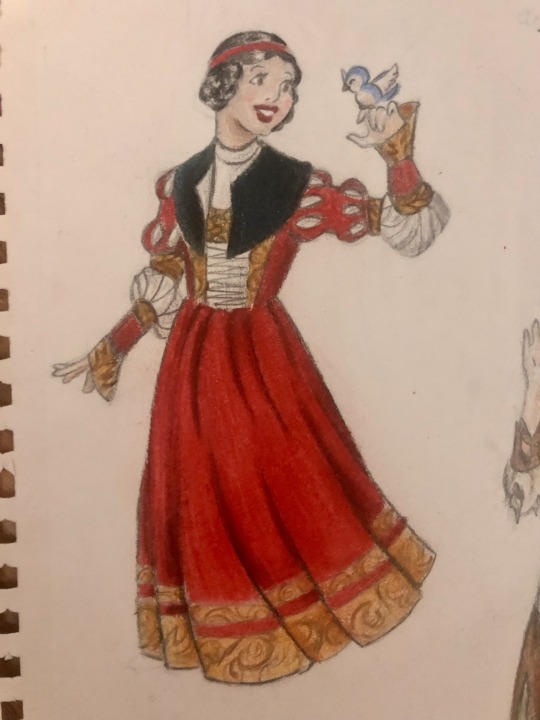
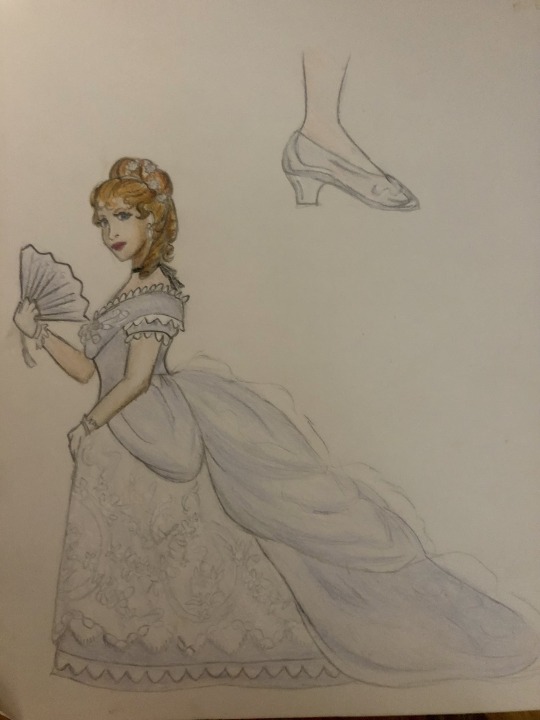
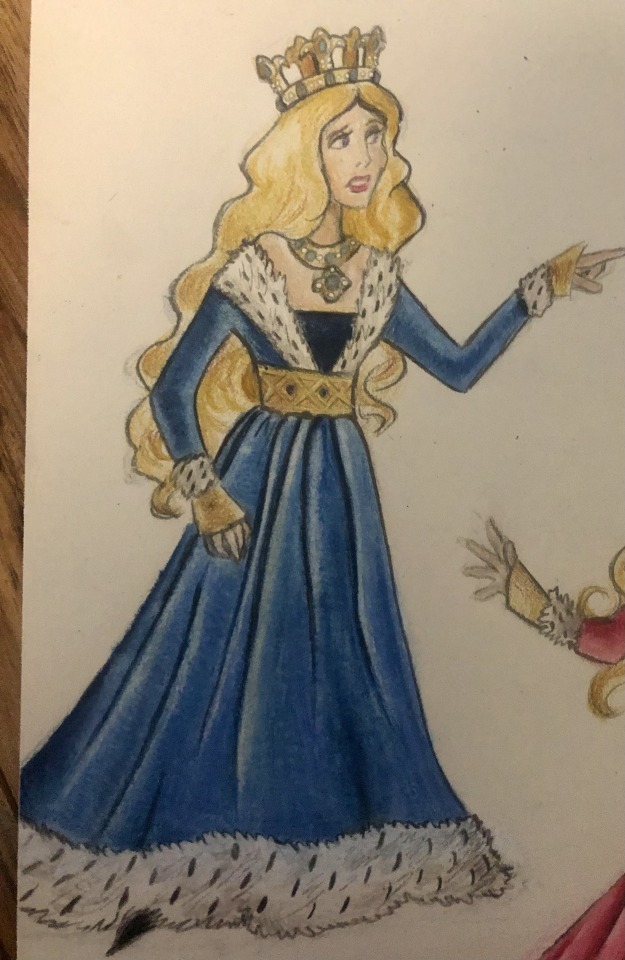
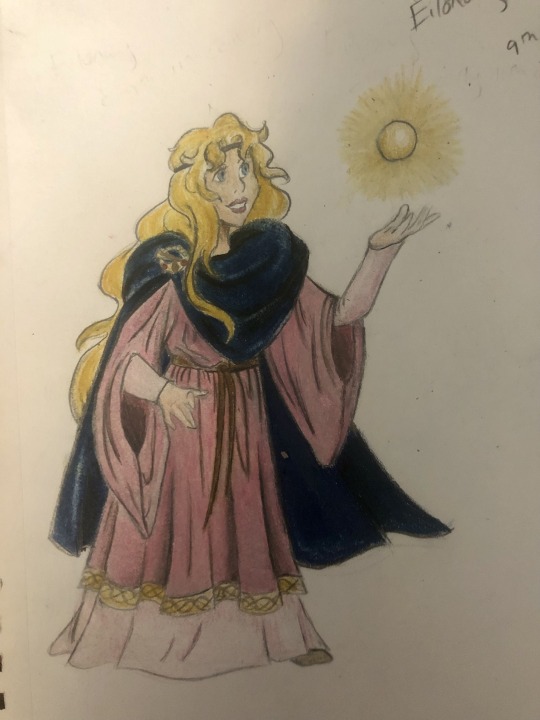
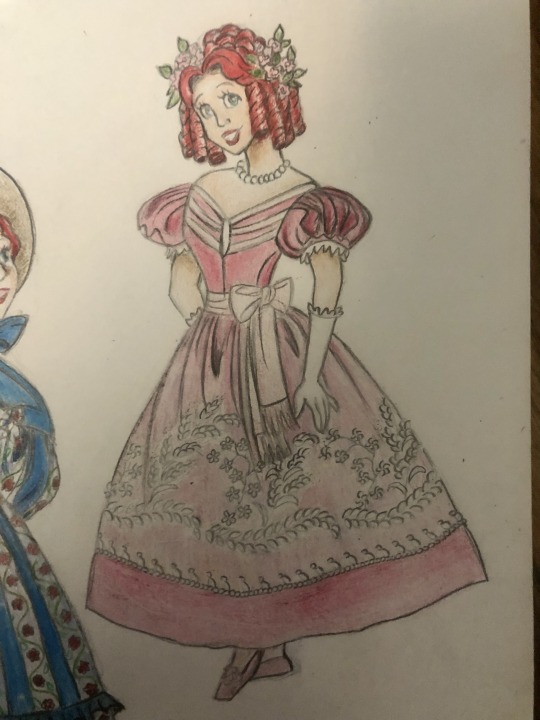
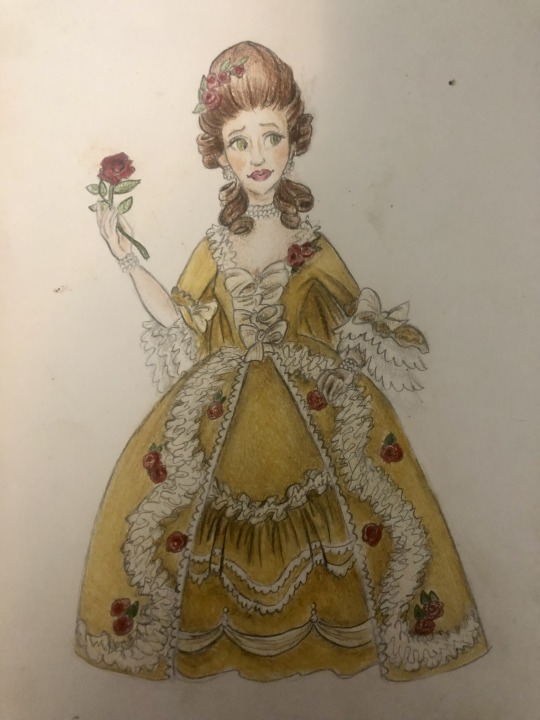
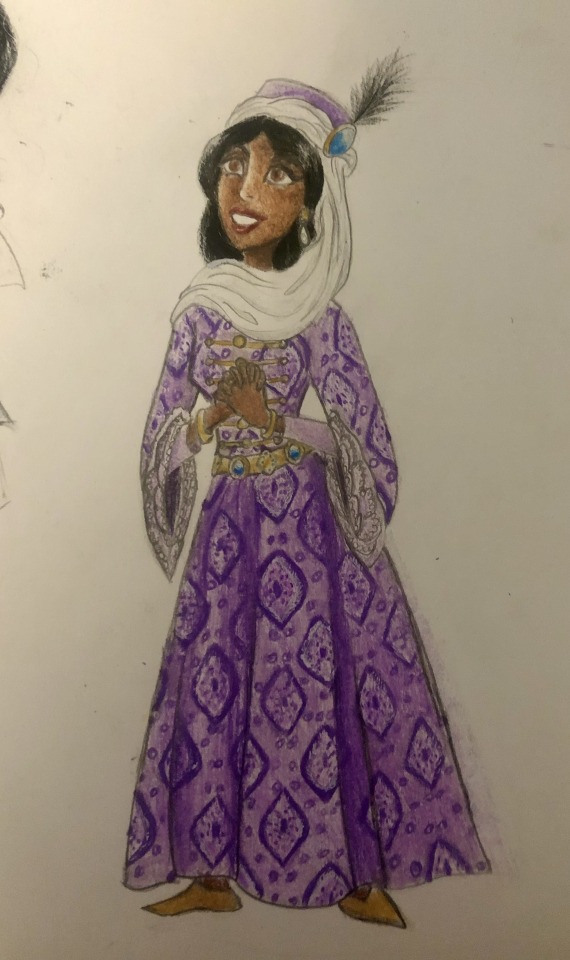
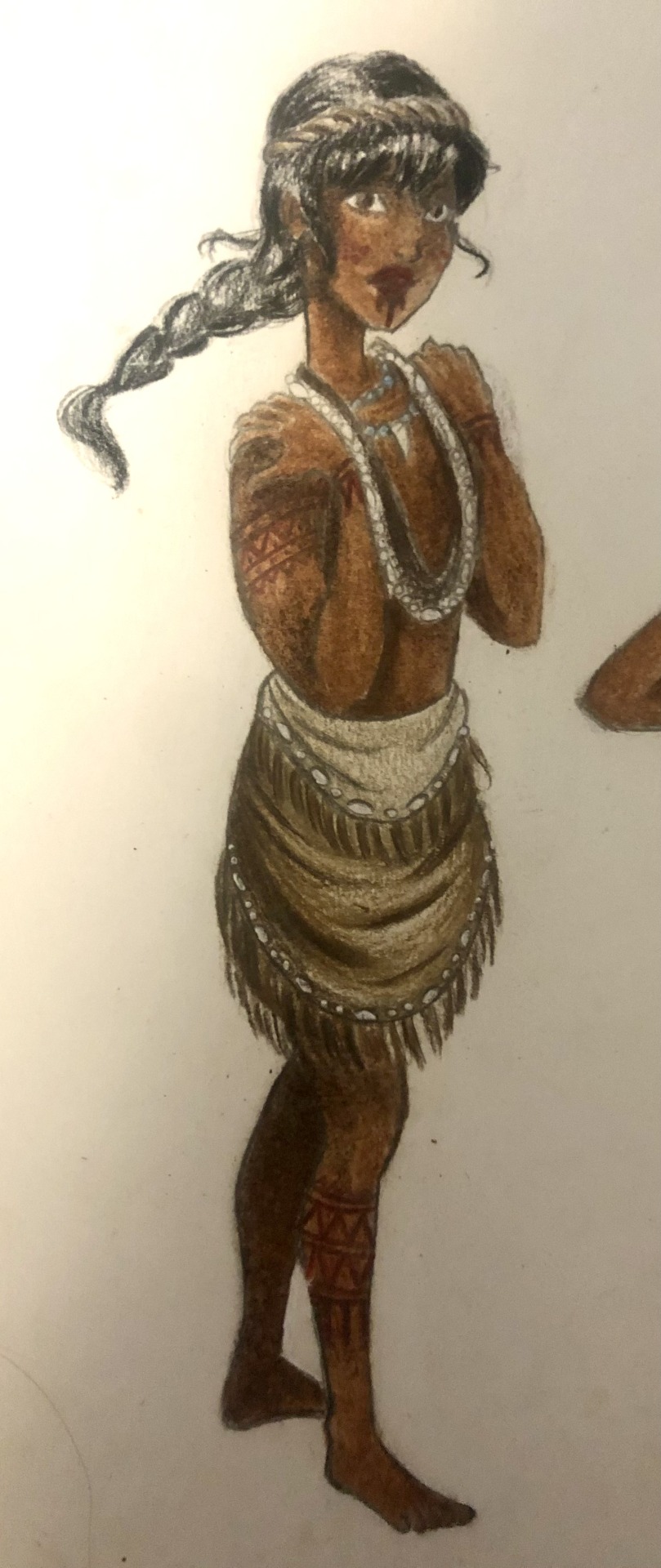
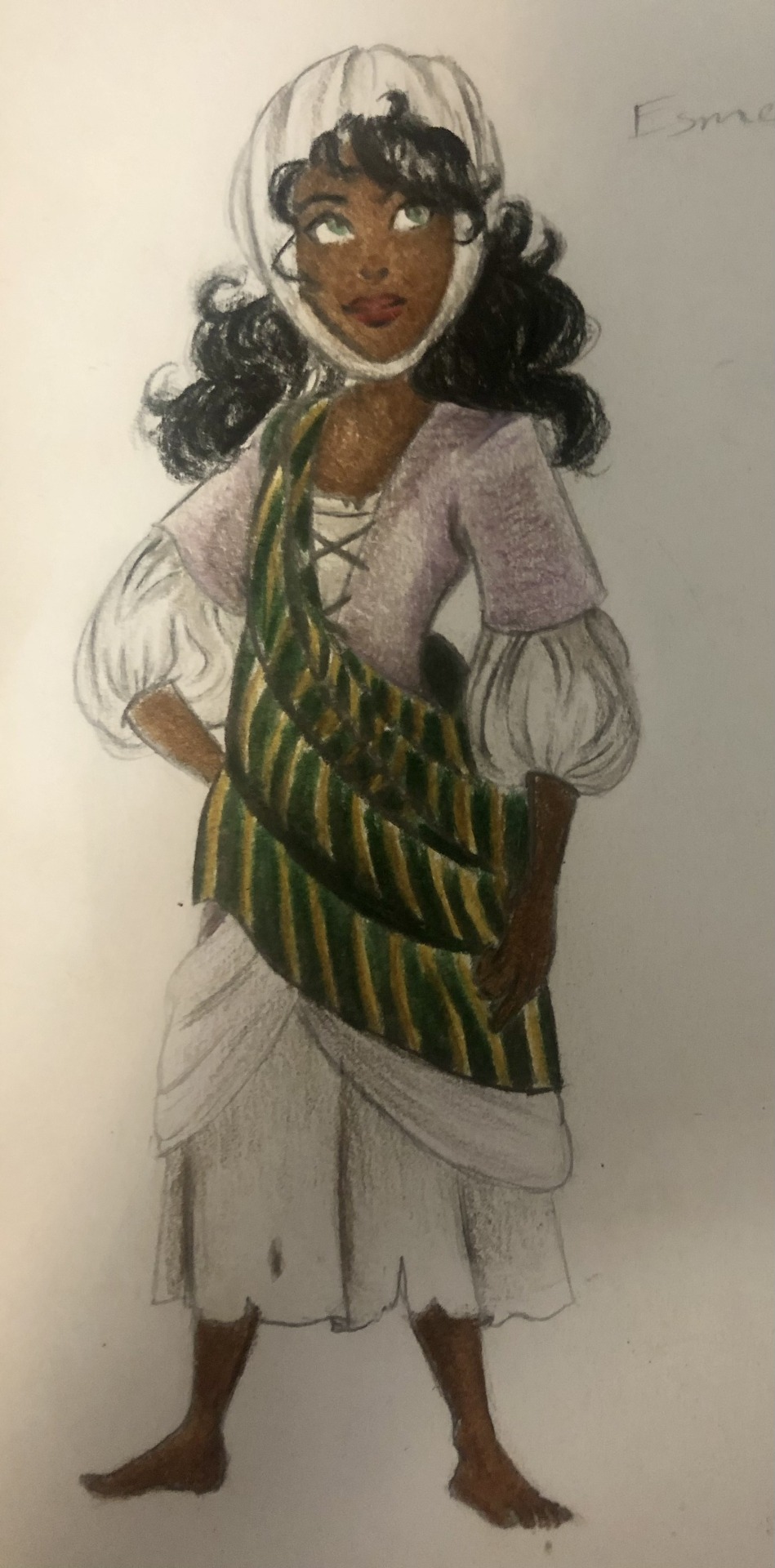
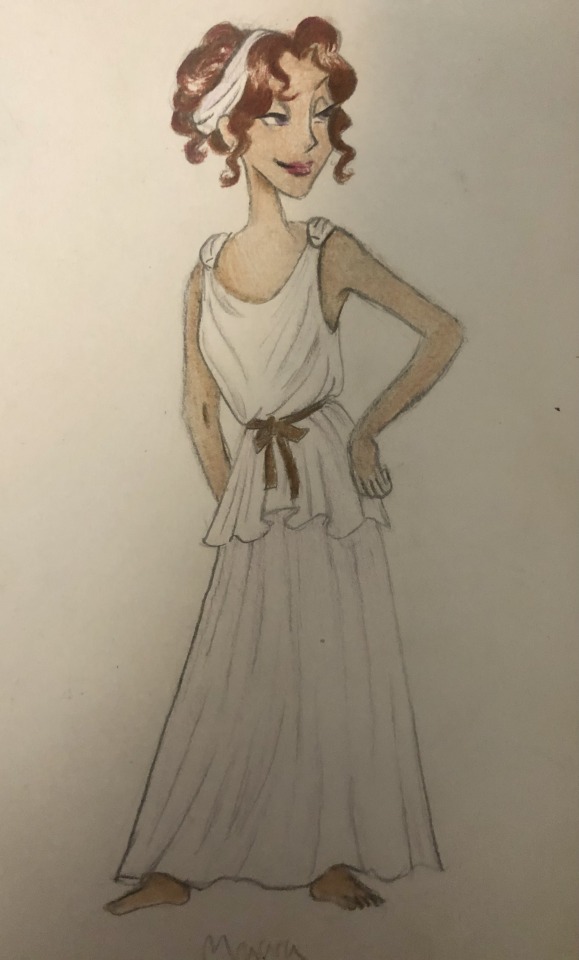
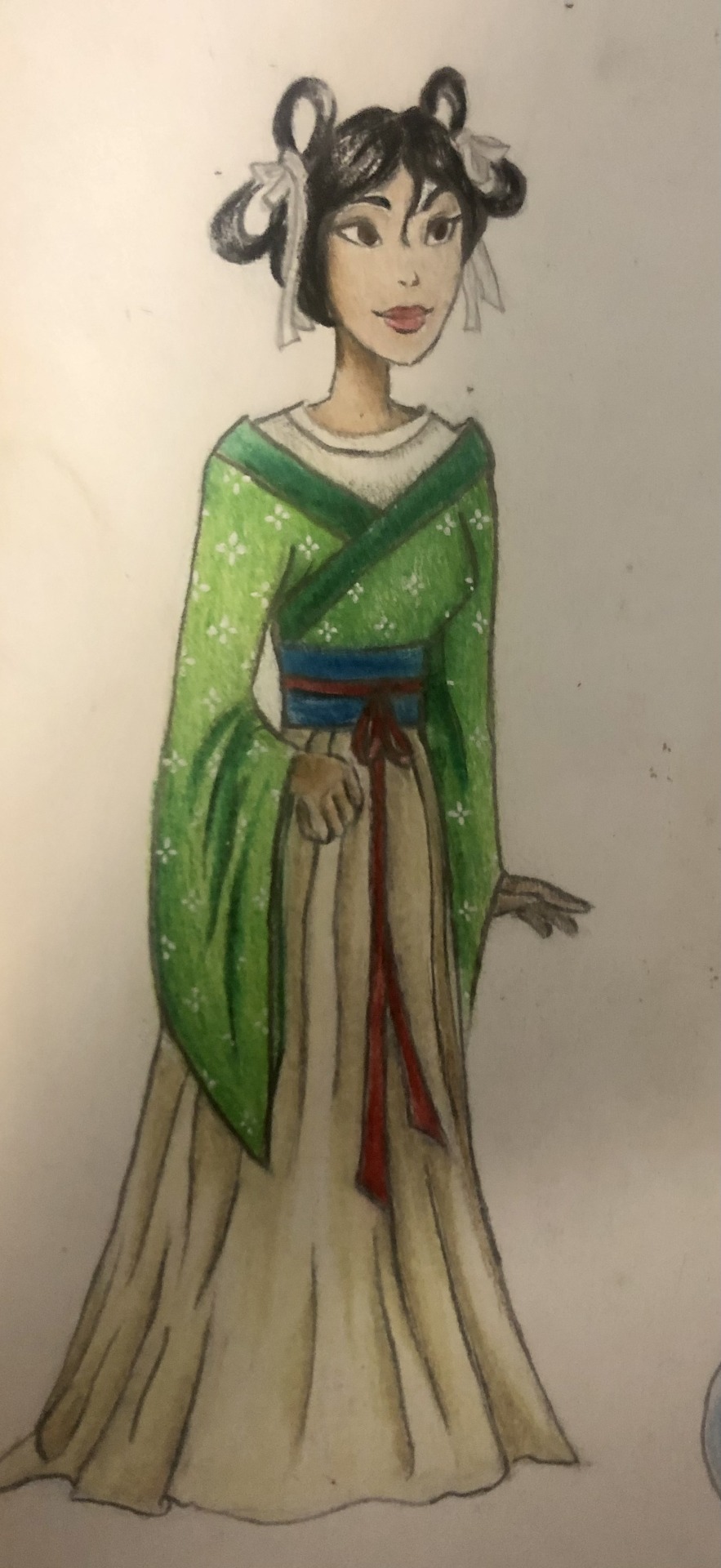
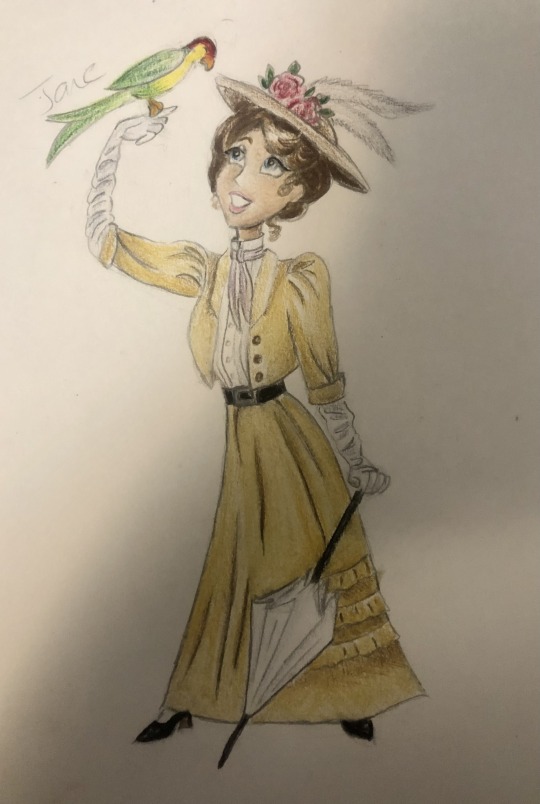
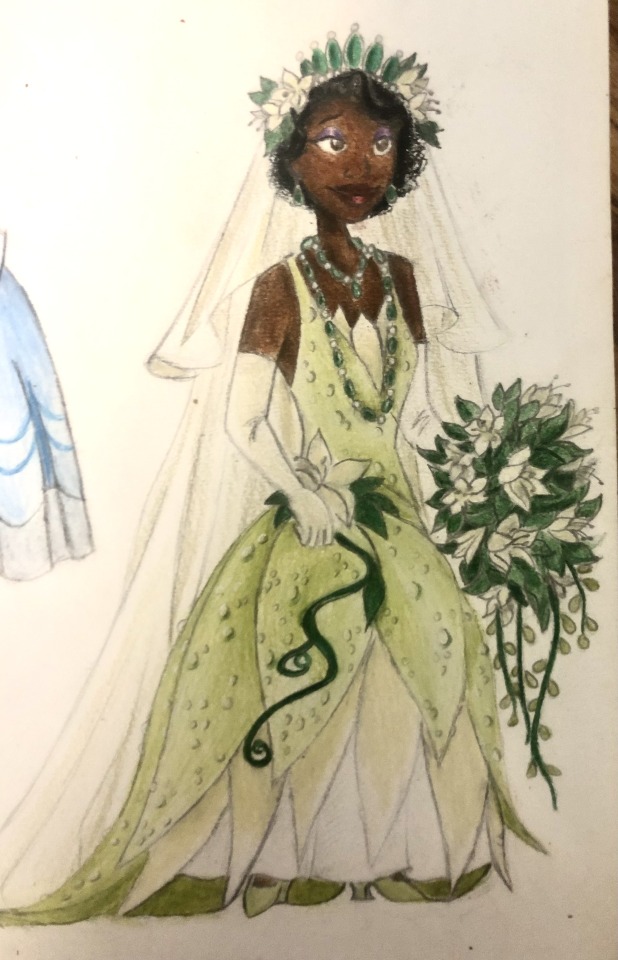

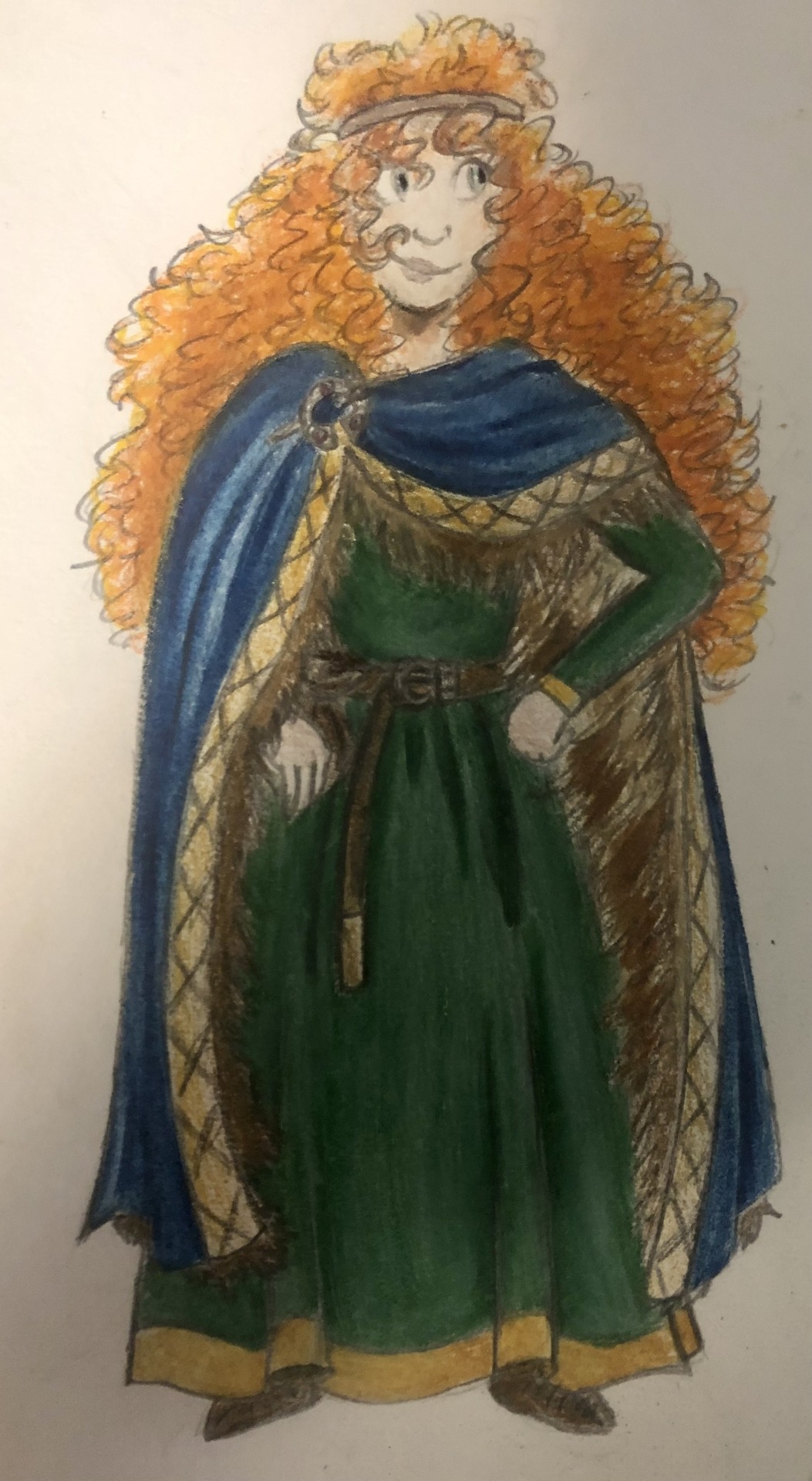
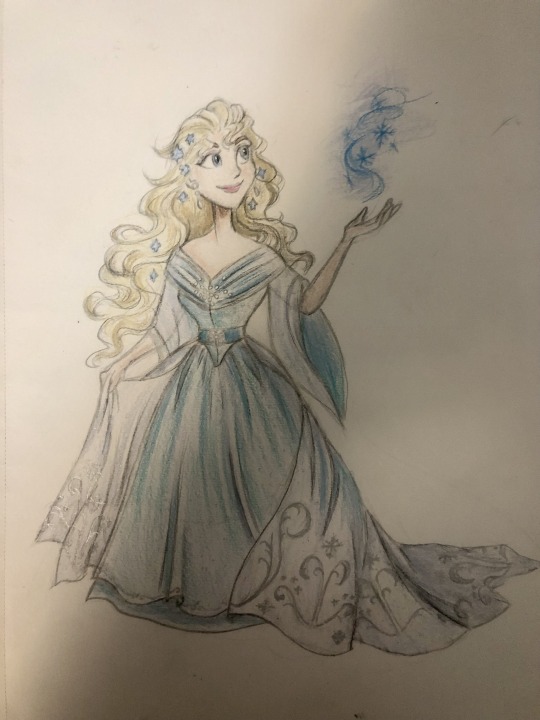
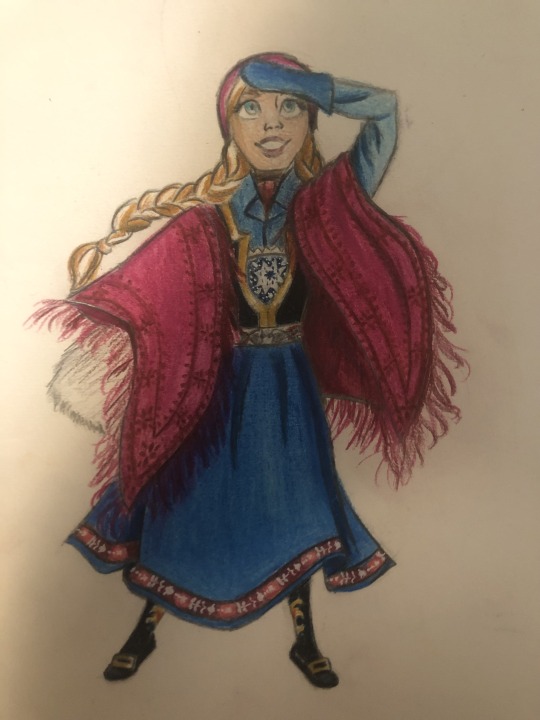
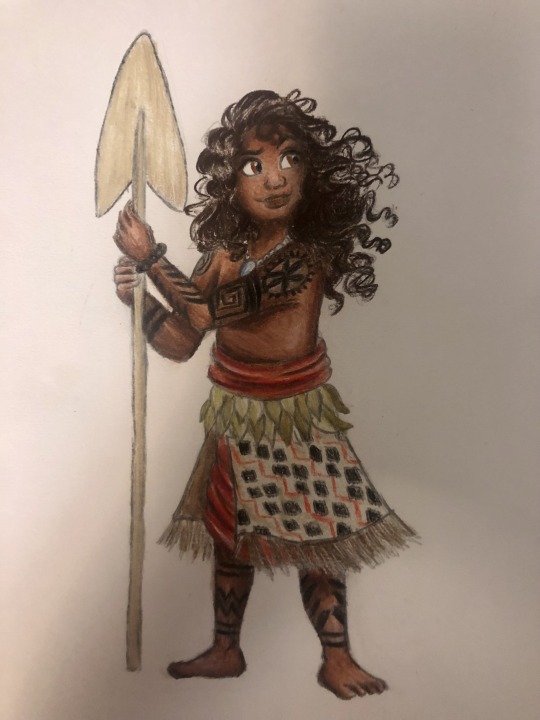
Thought I’d do a little art throwback with my own historically accurate (well mostly) takes on Disney princesses and heroines, which I did from 2021 to 2022! Included in this series are:
Snow White - early 16th century Germany (then part of the Holy Roman Empire)
Cinderella - late 1860s-early 1870s France
Aurora - mid 15th century France
Eilonwy - 8th-10th century (present day) Wales
Ariel - 1830s Mediterranean Europe (maybe Italy)
Belle - 1760s-1770s France
Jasmine - 16th century Arabian Peninsula during the Ottoman Empire
Pocahontas - 1607 Virginia, (present day) United States of America
Esmeralda - 1480s France (Romani garb)
Megara - Classical period of Ancient Greece (c. 5th-4th centuries BCE)
Mulan - Wei Dynasty China (386-535 AD)
Jane - 1900s England
Tiana - late 1920s New Orleans, Louisiana, USA
Rapunzel - 1790s-1800s Germany
Merida - 10th-11th century (present day) Scotland
Elsa - late 1830s-early 1840s Norway
Anna - same period as Elsa (duh)
Moana - ancient Polynesian Islands (c. 1st century BCE)
I had so much fun drawing these, as well as doing the research for each one! I actually drew most of the outfits each one wears (in their first movies) but they're waaaaay down further in my blog.
I'm planning to do a digital redo of these someday, as well as do my own historical spins on other characters I haven't done yet.
Which one is your favorite?
Commissions info
#my art#angie's scribbles#disney#disney princess#disney princesses#disney heroines#disney girls#disney ladies#historical disney#historically accurate disney#historical fashion#snow white#snow white and the seven dwarfs#snow white 1937#cinderella#cinderella 1950#princess aurora#aurora#sleeping beauty#sleeping beauty 1959#eilonwy#princess eilonwy#the black cauldron#ariel#the little mermaid#the little mermaid 1989#belle#beauty and the beast#beauty and the beast 1991#jasmine
297 notes
·
View notes
Text
Roughly 10 Cool Historical Queer Figures More People Should Know About
Part 1 - From Ancient Era to Early Modern Era
In spirit of Pride Month here's some snippets of queer history I think are interesting.
I've been working on a series of deep dives into interesting historical queer figures, but I haven't had the time to continue my list after the first entry about Julie d'Aubigny. I do want to continue with it, but I came to the realization that I will never have to time to do all the cool and interesting figures in depth, since there's too many, so I decided to do a list with brief descriptions about some of my favorite figures who are not that well known. Some of them are more well-known than others but I think they all deserve more acknowledgement.
I was able to trim down the number of figures to (roughly) 20, which was still too many for one post, so it's two posts now. They are in chronological order, so this part is set mostly before Victorian Era and the second part will be from Victorian Era onward.
This list is centered around western history (but not exclusively) because that's the history I'm most familiar with, though it's definitely not all white, since western history is not all white. I will be avoiding using modern labels, since they are rarely exactly applicable to history, rather I will present whatever we know about these figures' gender, sexuality and relationships. If there's information about what language they used about themselves, I will use that. Often we don't know their own thoughts, so I will need to do some educated guess work, but I will lean towards ambiguity whenever evidence is particularly unclear. If you are the type of person who gets angry with the mere suggestion there's a possibility that a historical gnc person might not have been cis, I encourage you to read my answers to related asks (here and here) first before sending me another identical ask. Try to at least bring some new arguments if you decide to waste my time with your trans erasure.
1. Khnumhotep and Niankhkhnum (latter half of 2400 BCE)

Khnumhotep and Niankhkhnum were ancient Egyptian royal servants, and possibly the first recorded gay couple in history known by name. They shared the title of Overseer of the Manicurists in the Palace of King Nyuserre Ini. They both had a wife and children, but they (along with their families) were buried together in a tomb. The tomb decorations show them similarly as other afterlife couples.
2. Marinos the Monk (c. 5th-8th century)
Marinos the Monk was born as Marina somewhere in eastern parts of Byzantine Empire, likely in the Levant. He was from a wealthy Christian family, possibly Coptic. Assigned female at birth his widowed father planned to marry him off and go to a monastery himself, but he convinced his father to take him with him dressed as a boy named Marinos. His father agreed and they were accepted as monks. After his father died many years later, he continued his life as a male presenting monk. Later he was accused of fathering an illegitimate child with a daughter of an innkeeper, which was not possible, but he didn't revoke the accusations, instead he begged for the abbot's forgiveness for "his sins". Marinos was banished from the monastery and became a beggar. For 10 years he raised his alleged illegitimate child as a father, until he was allowed to return to the monastery and do penance. Only after his death the abbot and the monks discovered his genitals and his inability to father children and were distraught for punishing an innocent man for 10 long years. The real father was discovered and along with the innkeeper and his daughter they all came to honor Marinos' grave and ask his forgiveness. He was canonized as a saint for his sacrificial selflessness, modesty and humility and honored across the Mediterranean from Ethiopia to France.
3. Mubārak and Muẓaffar al-Saqlabi (c. 10th - 11th century)
Mubārak and Muẓaffar were co-rulers of Taifa of Valencia in Muslim Spain. Al-Saqlabi means literally "of the Slavs", which in Al-Andalus was a general term for enslaved northern Europeans, as the two had been enslaved as children. They were in the service of another al-Saqlabi, a chief of police, and they worked they way up as civil servants till a local military coup in 1010, which resulted in them becoming the emirs of Taifa of Valencia. English language sources often describe them as "brothers" and "eunuchs", which gives the "historical gal pals" trope a concerning twist, but contemporary Muslim sources wrote fawningly about their passionate love, trust based on equality and mutual devotion. There was a popular genre of homoerotic poetry in the Islamic world at the time and poems in that genre were written about celebrating Mubārak and Muẓaffar's relationship. In 1018 Mubārak was killed in a riding accident and Muẓaffar shortly after in an uprising.
4. Eleno de Céspedes (1545 – died after 1589)
CW: genital inspection
Eleno was born in Andalusia, Spain, to an enslaved black Muslim woman and to a free Castillian peasant. He was assigned female at birth, given name Elena, and branded as a mulatto born to a slave. She was freed as a child and married to a stonemason at 15-16 years old. When pregnant, her husband left her and died a while later. Later Eleno testified that his intersex condition became externally visible, while he gave birth, and he became a man. He left his son to be raised by a friend and traveled around Spain. After he stabbed a pimp and ended up in jail, he started presenting as a man and openly courting women. Eventually he taught himself to be a surgeon with the help of a surgeon friend.
When he married María del Caño, his maleness was questioned and he was subjected to genital inspection multiple times and it was agreed by doctors that he had definitely male genitals, possibly also female genitals. After a year of marriage the couple was accused of sodomy. Eleno was tried by the Spanish Inquisition and subjected to more genital inspections, during which no penis was found. He claimed that his penis had been amputated after an injury. He defended himself in the trial by arguing that his intersex condition was natural and he had become a man after his pregnancy, so his marriage was legal. He was sentenced only for bigamy, since he had not confirmed that his husband was dead and punished as a male bigamist with 200 lashes and 10 years of public service to care for the poor in a public hospital. His fame attracted a lot of people wanting to be healed by him, which which was very embarrasing for the hospital so he was sent away and eventually exonerated from his charges.
5. Chevaliére d'Éon (1728-1810)

Charles d'Éon de Beaumont was born to a poor French noble family. In their 20s they became a government official and at 28 they joined the secret spy network of the king, Secret du Roi. They became a diplomat first in Russia and later in Britain while they used their position to spy for the king. Rumors circulated in London that they were secretly a woman. While in London they had a falling out with the French ambassador, accused him of attempted murder and published secret diplomatic correspondence. They were instead accused of libel and went into hiding. After the death of Louis XV in 1774 and the abolishment of Secret du Roi, d'Éon negotiated with the French government of the end of their exile in exchange for the rest of the secret documents he possessed. D'Éon took the name Charlotte, claimed she was in fact a cis woman - she had pretended to be man since a child so she could get the inheritance - and demanded the government to recognize her as such. When the king agreed and included funds for women's wardrobe, she agreed and returned to France in 1777. After that she helped rebels in the American War of Indepence - was not allowed to ]go and fight too, ghostwrote her not super reliable memoir, offered to lead a division of female soldiers against the Hasburgs in 1792 - was for some reason denied, attended fencing tournaments till 65 years old and settled down for the rest of her years with a widow, Mrs. Cole. After her death a surgeon reported that she had male primary sex characteristics, but fairly feminine secondary sex characteristics, like round breasts, which might suggest she had hormonal difference/was intersex in some way.
6. Public Universal Friend (1752-1819)
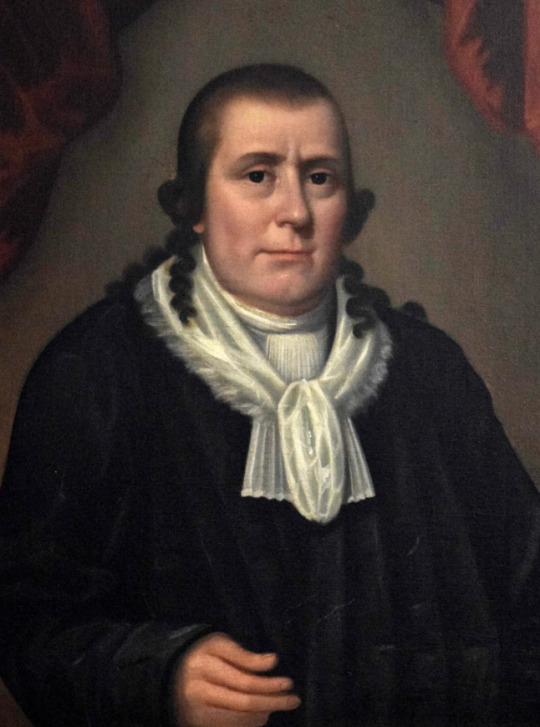
Public Universal Friend, or The Friend or PUF, was born as Jemima Wilkinson to Quaker parents in Rhodes Island, USA. Jemima contracted a disease in 1776, gained intense fever and almost died. The Friend claimed that she did die and God sent the Friend to occupy her body. The Friend didn't identify as man or a woman, and when asked about the Friend's gender, the Friend said "I am that I am". The Friend didn't want any gendered pronouns or gendered language to be used about the Friend. The Friend's pronouns, according to the writings of the Friend's followers, were "the Friend", "PUF" and possibly he. First recorded neo-pronouns perhaps? The Friend also dressed in androgynous/masculine manner.
The Friend started a bit cultish religious society disavowed by mainstream Quakers, The Society of Universal Friends, which I can only describe as chaotic good. The Friend first predicted a Day of Judgement would come in 1780 and when 1780 came and went, the Friend decided it was New England's Dark Day in 1780 and they had survived survived the Judgement Day so all was good then. The Friend preached for gender equality, free will, universal salvation (Jesus saved everyone and no one will go to hell) and abolition of slavery. The Friend persuaded any followers to free their slaves, which is probably the most chaotic good thing a potential cult leader can do with their influence over their followers, and several freed black people followed the Friend too. The Friend advocated for celibacy and was unfavorable towards marriage, but didn't think celibacy or rejection of marriage were necessary for everyone else, so it feels more like a personal preference. Many young unmarried women followed the Friend and some of them formed Faithful Sisterhood and took leadership positions among the Society.
The Society of Universal Friends tried to form a town for themselves around mid-1780s, till in 1799 the Friend was accused of blasphemy. The Friend successfully escaped the law two times. First the Friend, a skilled rider (what's a gender neutral version of horse girl?), escaped with a horse, then after an officer and an assistant tried to arrest the Friend at home, women of the house drove the men away. Third time 30 men surrounded the Friend's home at night, but a doctor convinced them that the Friend was in too poor health to move but would agree to appear at court. The Friend was cleared for all charges and even allowed to preach at the court.
7. Mary Jones (early 1800s–1853)
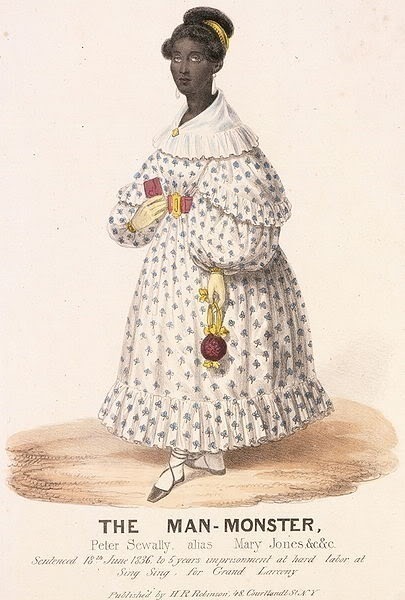
Mary Jones' origin is unknown, but she was an adult in 1836 in New York, USA. She was a free Black person, who preferred to present as a woman. She was sex worker by trade and used a prosthetic vagina. As a side hustle she would steel her customer's wallets, and usually they wouldn't tell anyone because it was 1830s and inter-racial sex and prostitution were illegal and everyone was repressed. Smart. Get your coin, girl. However after one of her more shameless customers discovered his wallet with 99 dollars inside had been replaced with a different man's empty wallet and contacted the police, she was arrested. The police discovered she had male genitals and when they searched her room they found several more stolen wallets. She appeared in court in her female presentation and when asked about her dress, she said that prostitutes she had worked with encouraged her to dress in women's clothing and said she looked better in them. They were right and she had since presented as a woman in her evening profession and among other Black people. She was convicted for grand larceny and sentenced to 5 years in prison. Later she continued to present as a woman and practice sex work, for which she was arrested for two more times.
8. George Sand (1804-1876)
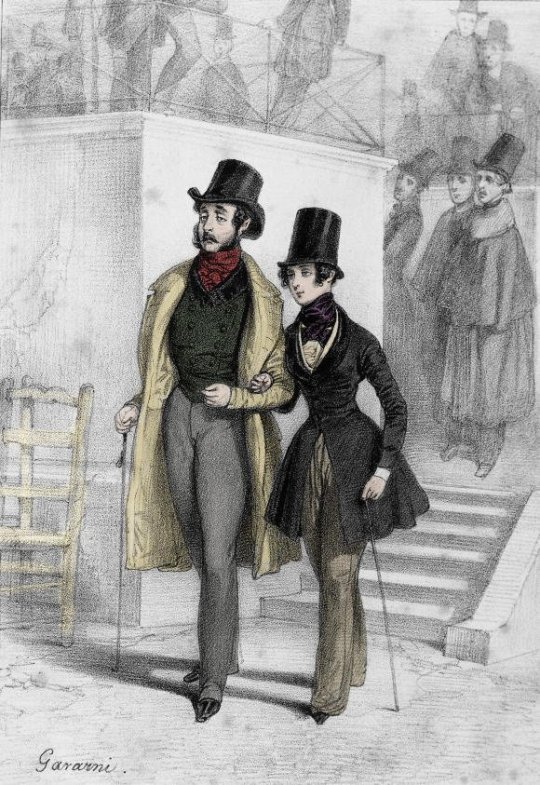
George Sand was pen name of Amantine Lucile Aurore Dupin de Francueil, a French Romantic writer. Amantine was high-born with a countess as a grandmother. George wrote about themself with alternating masculine and feminine language, using feminine language when talking about his childhood, but masculine language often other times. Their friends also used both masculine and feminine terms about them. Victor Hugo for example said about them: "George Sand cannot determine whether she is male or female. I entertain a high regard for all my colleagues, but it is not my place to decide whether she is my sister or my brother." George preferred men's clothing in public, which was illegal for those seen as women without a permit, but they didn't ask for permissions. They alternated between masculine and feminine presentations. They were outspoken feminist, critic of the institution of marriage, committed republican and supporter of worker's rights. They were married at age 18, had two children and left their husband in 1831, but legally separated from him in 1835. They had many affairs with men and some with women, at least with actress Marie Dorval. Their most notable relationship was with Frédéric Chopin, but they fell out before Chopin's death.
#i will be absolutely writing in depth posts about some of these figures#the friend is 100% one of those i fucking love the friend that story is a gift that keeps giving#history#queer history#pride month#queer#lgbtq history#queer tag#trans history#gay history#sapphic history#lesbian history#intersex history
236 notes
·
View notes
Photo

A Gallery of Ancient Walls from Around the World
Walls in the ancient world were built around cities or territories for defense but also served many other purposes, such as enclosing temples, surrounding palaces, enclosing tombs, providing people with homes, and encircling sports venues, among other purposes. These walls also frequently served as a kind of canvas for artists depicting kings and their gods.
The oldest walls extant are those of the temple of Göbekli Tepe in southeast Turkey, dated to around 11,500 years ago. The first city walls surrounded Jericho in the 10th century BCE and walled cities became common throughout Mesopotamia by c. 4500 BCE. The earliest walls were made of sun-dried brick before they began to be constructed of stone in ancient Egypt. Stone would become the most common building material for walls in other regions as well, including the Indus Valley Civilization, China, Greece, and Rome.
The following gallery presents images of ancient walls from Mesopotamia to Mesoamerica. Some, like the Ishtar Gate of Babylon, are ornamented while others, like the Great Wall of China, are not; but all are expressions of the cultures that raised them and believed they would stand the test of time.
Continue reading...
122 notes
·
View notes
Text

Orthostat Relief: Lion-Hunt Scene
Syria, Hittite, 10th−9th century BCE
242 notes
·
View notes
Text
i am a bit stunned by the amount of misinformation going around? and people are now accusing Eve of replacing Lilith in the later transcriptions… ?
let me try to share some of my knowledge? English is not my first language so this might not come across well?
the first ‘bible’ to speak of Adam was the Tanakh. specifically, he appears in the Book of Genesis, which is part of the Torah, the first section of the Tanakh. Genesis describes Adam as the first human, created by God. the story of Adam in Genesis is believed to be dated back to ancient Israelite oral traditions, around the 6th to 5th century BCE during or after the Babylonian Exile. this makes the Tanakh the first surviving document to tell the story of Adam and introduce him as the first human.
the Tanakh is made up of sacred Jewish texts written primarily in Hebrew, and it forms the canonical scriptures of Judaism. the easiest way explain the Tanakh is to think of it as being similar to what Christians refer to as the Old Testament…
Eve is the only named wife of Adam in the Tanakh. She is introduced in the Book of Genesis as Adam's companion, created by God from one of Adam's ribs (Genesis 2:18-25).
Eve is described as the "mother of all living" (Genesis 3:20) and is central to the story of the Garden of Eden and the "Fall" narrative.
Lilith is not mentioned in the Tanakh. her story comes later in the Alphabet of Ben Sira, written sometime between the 8th and 10th centuries CE. the Talmud and earlier Jewish texts mention Lilith as a demon or night spirit, but she has no connection to Adam and isn’t considered to be human at all.
the idea of Lilith as Adam's first wife became prominent in medieval Jewish mysticism and later folklore, but she doesn’t appear in the canonical Tanakh texts themselves.
the Tanakh is ancient scripture, the Alphabet of Ben Sira is a later work that reflects medieval folklore and ideas that expanded on and reinterpreted some biblical themes and figures. Lilith being Adam’s first wife is not considered biblical accurate and can be considered insulting suggesting otherwise ??? (from past experience!!! )
…sooooo Lilith actually replaced Eve and not the other way around.
44 notes
·
View notes
Text







Gameboard, German, late 17th–early 18th century
Game of Hounds and Jackals, Middle Kingdom, ca. 1814–1805 B.C.
Mirror with game board design, China, 1st–2nd century
Furniture leg possibly from a game board, Early Dynastic Period, ca. 3100–2900 B.C.
Chess Piece, King, Western Islamic lands, 8th–10th century
Fragmentary gaming board: game of 58 holes, Old Assyrian Trading Colony, ca. 18th century BCE
Chessboard, British, 19th century
32 notes
·
View notes
Photo

Terracotta oinochoe (jug). late 10th–early 9th century BCE. Credit line: Gift of the Greek Government, 1930 https://www.metmuseum.org/art/collection/search/253151
#aesthetic#art#abstract art#art museum#art history#The Metropolitan Museum of Art#museum#museum photography#museum aesthetic#dark academia
24 notes
·
View notes
Text
Adad-nirari II and the Rise of the Neo-Assyrian Empire, c. 900 BCE

Like the rest of the Ancient Near East, the Assyrians suffered during the so-called Bronze Age Collapse in the 12th century BCE. After the flourishing period of the Middle Babylonian Kingdom between c. 1400 and 1200 BCE, Assyria’s territory and power were reduced to its core area around the capital, Ashur. A dark age dawned upon this once-powerful state in northern Mesopotamia, though there were brief revivals, such as the reign of Tiglath-Pileser I in the early 11th century BCE. However, it was during the late 10th century BCE, under the reign of Adad-Nirari II, that the Assyrians re-emerged as the dominant force in Mesopotamia.
Adad-Nirari II succeeded Assur-dan II around 911 BCE, inheriting a weakened kingdom with little control over the surrounding countryside. Since Tiglath-Pileser I’s death in 1077 BCE, Assyrian territory had steadily declined, shrinking to little more than the city of Ashur. The greatest threat to the Assyrians came from the Arameans, who had begun spreading throughout the Ancient Near East in the late 2nd millennium BCE, raiding and destabilizing local economies. Determined to break free from the Aramean stranglehold, Adad-Nirari II waged war against these tribes, framing the conflict as a battle for survival and national liberation.
Adad-Nirari II successfully expelled the Arameans from the Tigris Valley and the Kashiari mountain range. He continued his conquests, subjugating several cities in the Jazira region (modern-day northeastern Syria and northwestern Iraq). After securing victory over the Arameans, he turned his attention southward to confront the other superpower of ancient Iraq: Babylon. He defeated King Shamash-mudammiq, capturing several key border cities and extending Assyrian influence to the frontier of Elam. However, his subsequent campaign against Babylon’s new ruler, Nabû-shum-ukīn I, met with stronger resistance. Eventually, a truce was reached, ensuring regional peace for the remainder of the 9th century BCE.
Adad-Nirari II died around 891 BCE and was succeeded by his son, Tukulti-Ninurta II.
#assyria#assyrian empire#assyrian art#mesopotamia#ancient near east#iraq#ancient iraq#babylon#babylonian#ancient art#ancient history
19 notes
·
View notes
Text
Jewish Life Pre-Diaspora: Jewelry
In my previous post in this series, I looked at something ephemeral and best seen in art; women’s hairstyles [x] and came up a bit short. While I’ll get to men’s hairstyles later I wanted to do something a little easier first, and so am doing a topic archaeology is the best tool at answering: What did indigenous Israelite and Judean people wear as jewelry?
Amir Golani has written the literal book on the subject, and so I’d recommend for further information and techniques you should read his book Jewelry from the Iron Age II Levant or his article Revealed by their jewelry: Ethnic identity of Israelites during the Iron Age in the southern Levant, but I’ll provide a summary and some images here.
Since in his writings on the topic Golani found the Israelites and Judahites (the members of the two Israelite Kingdoms in Canaan in the Iron Age) to be similar in ornamentation trends and groups them together, I’ll be doing the same here under the umbrella term Israelites.
(looooong post beneath the cut. you have been warned.)
Part 1: Distinctly Israelite Jewelry
While trade and the movement of craftspeople led to the dispersion of different styles of jewelry around the Mediterranean, we can see trends that indicate certain pieces of ornamentation are distinctive to Israelite culture.
Three types of pendants, usually made of bone or ivory but sometimes of terracotta or stone, follow the history of the Israelite kingdoms to a surprising degree: originating around the 10th century BCE and disappearing in the 8th Century BCE in the North, and the 7th to 6th centuries BCE in the South (matching the beginnings of the diasporas of Israel and Judah, respectively).
1.1 Club Pendants
These pendants are typically 4-9 cm long shaped pieces with rounded ends and a slightly conical shape. They have been found as far north as the Lebanese Coast and as far south as the northern Negev Desert, though most examples come from the historic borders of the Israelite Kingdoms. Some were plain, but many have bands, latticework, or ring-and-dot ‘eyes’ incised into them.

Similar pendants are found in Ephesus (in Asia Minor) and various sites on the Greek Mainland, but these all date to after the 8th century BCE, are truncated at the top rather than rounded, and only have the horizontal bands as decorations and may have arrived with Phoenician traders (as they had been found in the Phoenician city of Byblos in modern day Lebanon).
1.2 Plaque Pendants
These plaques were made of bone and usually had a stringing hole at one end, or with a tab to be attached to a string. Unlike the club pendants, they have more than a single shape; they can be rectangular or oval, circular or teardrops, and are incised with ring-and-dots, lines, and chevrons.

These have a much smaller range than the club-pendants, with most only being found in the territory of the Judean Kingdom. Two were found at Meggido in Israel’s territory, and one at the site of Hama in Syria.
It was at one point theorized that these served as calendars, since some examples have three rows of ten uniform ring-and-dots, the presence of examples with other, non-calendrical numbers (such as 17) indicates that this could not have been their only use.
1.3 Mallet Pendants
The most restricted of the Israelite pendants, both in morphology and in chronology, these pendants are made of two pieces of bone or ivory; a cylindrical head often decorated with ring-and-dot incisions, and a thin shaft pierced at one end for suspension that was inserted into the head at the other end.

These pendants appear in the 10th Century BCE, but disappear in the 8th Century, despite being found in both Israel and Judah.
The hammer form of these pendants, as well as their strict morphology, has led some to theorize that they were used to identify the wearer, though it is unknown if that identity would be to a profession, religion, or some other faction. Similar looking pendants are found in Sardinia in the 12th-10th centuries BCE, as well as Etruscan Italy and Greece in the 9th – 7th Centuries BCE, but those are made of cast bronze and are a single piece. There, however, we know from context that they were probably linked to the wearer’s profession. Whether this bears true for their Israelite counterparts is still unclear.
Part 2: Inherited Canaanite Traditions
While the bone pendants appear to be an aesthetic choice that evolved along with the Israelite identity, as a part of the Canaanite cultural tradition, Israelites also continued to create and wear adapted forms of Canaanite jewelry. Several styles of metallic jewelry that Canaanites also wore, and do not have aesthetic designs credited to the Phoenicians to the north, may be concluded to be the work of local craftspeople in the Israelite kingdoms.
2.1 Crescent Pendants
These are flat crescent-shaped pendants typically made of copper alloys, silver, or gold, though bone examples have been found. They are either strung through a hollow tab at the center of the pendant, connected to a string via two perforations in the crescent itself, or possibly directly sewn into clothing by those same perforations.

These pendants first appear in the area in the Middle Bronze Age (18th - 16th centuries BCE) and appear in archaeological contexts through the Iron Age II, with designs getting simpler over time.
What they represent is debated. Most intuitive to most people reading this would probably be the crescent moon, which was a widely used symbol in the Ancient Near East, either as a symbol of fertility or of redemption and regeneration. The moon cult has been extant in the region for a long time at this point (Jericho, one of the oldest cities in the world, is named after the local moon god Yarikh, who is also the source of the Hebrew word for The Moon, Yareakh).
Other hypotheses include bulls horns or boars tusks, the later of which were used in the area to ward the evil eye away from horses through the Ottoman Period in the Levant. This is further supported by one of the specimen from the Middle Bronze Age in Megiddo is apparently too large to be worn comfortably by a human, and lines up nicely with a story from the biblical story of Gidon taking crescents as spoils of war from Midianite camels in the book of Judges.
2.2 Rings
2.2.1 Finger Rings
Finger rings with bezels (a wider portion used for mounting or displaying an object or image) are by no means a Israelite invention; the style they imitated comes from Egyptian scarab rings, named for their scarab-shaped bezels, which first appeared around 2000 BCE. However, types were worn by Israelites, and their innovations on the style are of interest.

(Egyptian scarabs and scarab rings, via Wikimedia Commons)
The first style Israelites used, all dating to the 7th and 6th centuries BCE, widens and flattens the metal of the ring at its terminal ends, which can support a scarab or other bezel. The rings are made of silver or gold and flattened ends are decorated with flowers, palmettes, or other forms of decorative flora.
The bezel may be made of gold, silver, faience (ancient glass) or may be absent entirely (though it's possible the bezel was simply lost to the sands of time). Unfortunately, such rings are rare (and some of them are poorly documented), so a more robust typology is difficult.

The second form more closely resembles a traditional Egyptian scarab; a round body to the ring with a flattened area at the tips of the terminal ends to support a bezel that may be swiveled on its axis to show off all sides of the piece (this was very important with scarabs, as the bezel was shaped to resemble like a beetle and the flat bottom bore a seal or inscription). The key difference is the material of the scarabs: where the Egyptian scarab is faience or stone, the Israelite 'scaraboid' is made of metal, and the carved scarab is nonexistent.
These are extremely rare and only appear in the record at the end of the Iron Age II (right before the diaspora) and in the Persian period following, so they may have been a relatively short-lived phenomenon - at the same time similar non-metallic, non-ring seals and scarabs are relatively common.

2.2.2 Large Rings
A form of large ring (that is large enough to fit on a limb rather than a finger) that only appears in Israelite contexts has a catch to secure it in place, using a diamond-shaped end and a U-shaped end with upturned ends. Only four of these have been found, all made of a copper alloy, and all from the latter half of the Iron Age II (8th-7th centuries BCE)

This wearing of metal bracelets and anklets appears to be a holdover from Canaanite traditions, where we see depictions of goddesses wearing such items. That, their rarity, and idea that the innovation here is functional rather than aesthetic, are why I believe is why Golani doesn't consider this as a uniquely 'Israelite' jewelry form.
It should be noted here that these are not the only large rings found in the Israelite kingdoms, and evidence from graves indicate that both men and women wore single, solid metal arm-bands as jewelry. Women may have also worn multiple, simple, large rings as bangles as depicted in figurines (which to my chagrin told me nothing about hair, but I digress). This may be a local innovation by Southern Canaanites and Israelites, as the Phoenicians to the north are not depicted this way. Bangles were made of many materials; copper alloys, silver, gold, iron, and even shell.

(More common styles of large rings found in the Israelite kingdoms alongside the rare locking one above)
2.3 Earrings
The styles of earring Israelites used were innovations on earlier Canaanite styles, and were so numerous I'll just be showing archetypal forms and the uniquely Israelite ones, otherwise I might as well rewrite the whole book.
2.3.1 'Lunate Earrings'
These earrings are solid metal (usually silver or copper, but any nice metal works) with a crescent body, a bent and tapered hoop that is narrower than the body, and ends that usually meet at one side.

(Simple Lunate Earrings, found throughout the Ancient Near East)
The most common Israelite version of this earring, and indicative of the Iron Age II (our time period of interest), widens the lunate and rounds out the whole earring for a more robust, heavy design, often with a small rise in the center of the body

Towards the end of the Iron Age II, the hoop elongates and decorations such as wire wrapping or soldered hoops and globules appear on the lunate, and are made of exclusively expensive metals such as silver and gold.

A unique final example comes from the city of Lachish in the Shephelah of Judah from the 8th century BCE (Iron Age II). 'At least a dozen' lunate earrings were found in a corroded mass in a burial cave. at least one of these depicted the head and torso of a woman, but the corrosion of the pieces precluded further analysis.

2.3.2 Lunates with Fixed Attachments
A more ornamental variation on the lunate where the body has an attachment joined to it. The archetypal form of the attachment is that of a hollow ball, tear, or pear, and is further decorated with wiring or soldered globules. Much more detailed than the basic lunates, these seem to typically be made of nicer metals such as silver and gold.

These evolved from much simpler tear and globule attachments worn by Canaanites as early as the Middle Bronze Age.


There is an variant of these solid globule attachments that is common in the 8th - 7th centuries BCE with a ring of globules supporting a center orb, that I think is neat, but is kind of an evolutionary offshoot of the more ornate attachments.

Towards the end of the Iron Age II, elaborate attachments begin to appear, including clusters, rows, and pyramids (or even rows of pyramids!) of globules, as well as fans and the elaborate hollow examples above.


It should be noted that these more ornate forms of earrings are rare in Israelite society, the simple lunates and solid globule attatchment lunates were by far the most common forms of ear ornamentation.
Part 3: Conclusion
When looking at the more common pieces of jewelry among Israelites, bone pendants and copper alloy metal rings and earrings in relatively simple forms seem to be the most common items, despite the wealth of the kingdoms attested to by Assyrian records of what they looted during their invasions.
Additionally depictions of Israelites generally show them without jewelry (but that may be due to them being depicted by conquerors who took their jewelry, rather than by Israelites themselves).
So what's with this apparent aesthetic of austerity? According to Amir Golani, the Israelite kingdoms may not have been poor, but the Israelite Identity as separate from Canaanites possibly started as a rejection of the Canaanite City State culture of the Late Bronze Age, and a general distaste of luxury goods may have persisted through the development of the ethnicity to a more spartan aesthetic overall (this is not just seen in jewelry, Israelite pottery is basically earlier Canaanite forms, just undecorated, with some exceptions).
If you made it this far, congratulations! I hope this was as interesting to read as it was to look into, and thank you for your time.
#jewish stuff#ancient jewelry#archaeology#ancient israel#israeli archaeology#long post#op is me#JLPD Project
29 notes
·
View notes
Text
Flowers of Mythology - Narcissus


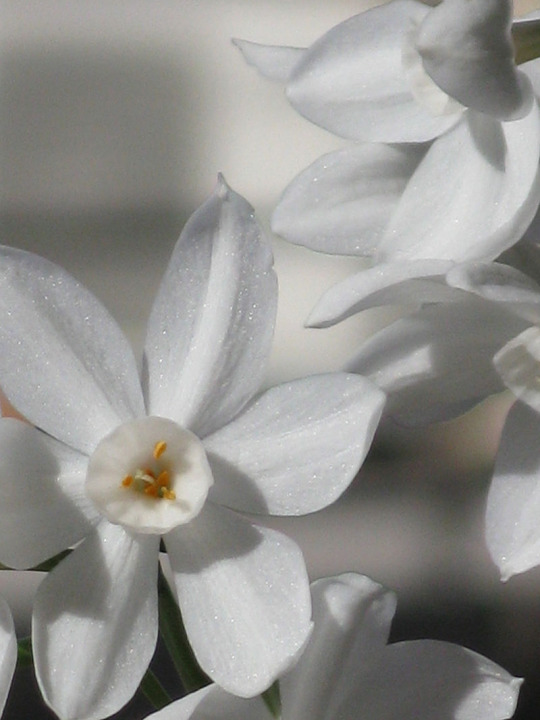
Narcissus is a genus of plants that include daffodil and jonquil as well as narcissus. They are spring flowering perennial plants that have obvious flowers with six outer petals and a cup- or trumpet-shaped crown. These can be white or yellow and both the outer petals and crown can be the same or opposite colors. Garden varieties, which are specifically bred for other colors, can come in orange or pink. They developed approximately 20 million years ago in the area around the Iberian Peninsula. It is native to southern European and North African meadows and woods, but was cultivated elsewhere so that it reached the Far east before the 10th century. It was used for treatment of cancer and uterine tumors, as attested by Hippocrates (lived around 460-370 BCE) and possibly the Bible as the Rose of Sharon, though that usage fell out of favor as attested by Pedanius Dioscorides (lived around 40-90 CE) and Soranus of Ephesus (lived 98-138 CE). There are compounds that do help protect against the growth of tumors. Pliny the Elder (lived 23-79 AD) was an advocate for topical usage. They also repel rodents. Modern usage of narcissus include as a treatment for Alzheimer's disease.
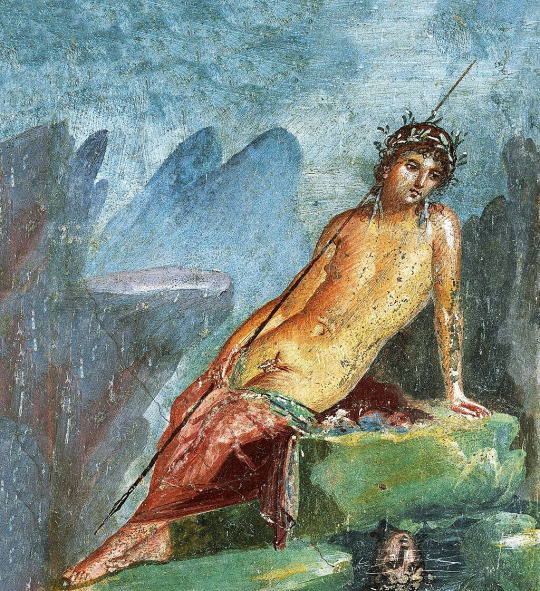
By Unknown author - http://almacendeclasicas.blogspot.com/2015/05/pompeya-la-casa-de-marco-lucrecio.html, CC0, https://commons.wikimedia.org/w/index.php?curid=112691977
The Greeks have two myths that involve the narcissus flower. One is That of the hunter Narcissus from Thespia in central Greek. The -issos ending of his names indicates that this myth likely pre-dates the Greek world, though whether the flower was named first or after the hunter is unknown. There are several versions of the myth that survive to this day. The most well known version of the myth of Echo and Narcissus is from Ovid's Metamorphoses. In that version of the myth, Tiresias, a prophet who took Zeus' side in a contest between him and Hera, so Hera blinded him. Zeus then made Tiresias a prophet. He also spent seven years as a woman, again caused by Hera for his hitting mating snakes with a stick.
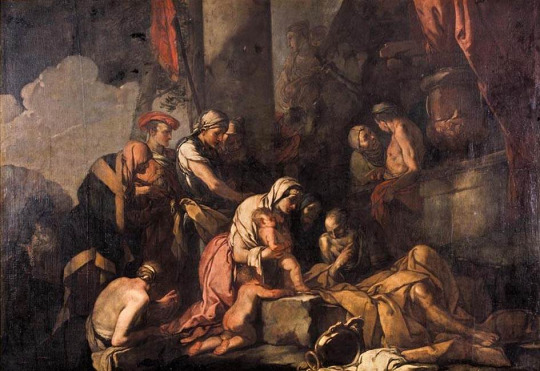
By Giulio Carpioni - Web Gallery of Art: Image Info about artwork, Public Domain, https://commons.wikimedia.org/w/index.php?curid=10618028
Liriope was 'ravaged' by Caphissus, a river god, and later gave birth to Narcissus, who was 'beautiful even as a child'. Tiresias prophesied Narcissus could only live a long life if he never 'came to know himself'. When he was 16, he went hunting with friends, and ended up separated from them and lost.
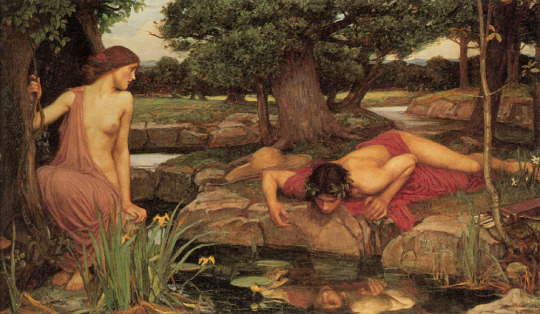
By John William Waterhouse - http://www.allartpainting.com/echo-and-narcissus-p-16444.html, Public Domain, https://commons.wikimedia.org/w/index.php?curid=7716057
Echo, a mountain nymph, was used by Zeus to keep Hera busy while Zeus catted about behind her back, or while his lovers escaped from Olympus. Hera punished her by making it so Echo could only repeat what she'd just heard. Echo saw Narcissus and became inflamed with desire and followed after him. Narcissus became aware of Echo's presence, but he couldn't see her. He called out 'Who's there?', which she called back, and so on. Echo crept closer to Narcissus, until he could see her. She tried to embrace him and he rebuffed her, telling her to 'keep her chains'. After this, Echo wasted away until only her voice remained.
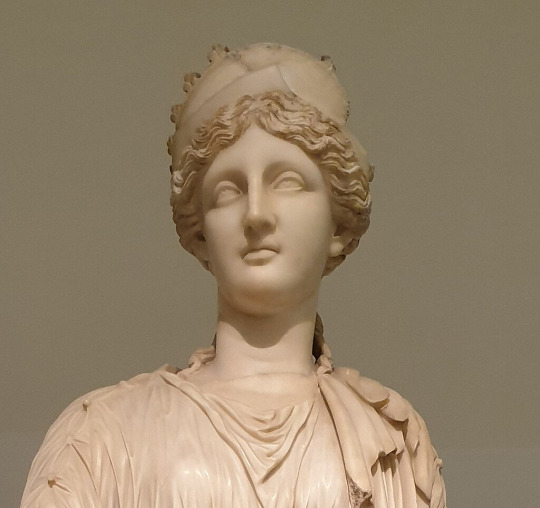
By Jamie Heath - https://www.flickr.com/photos/mumblerjamie/49345495687/in/photolist-7dQTrU-Jt9nya-6hGRqg-2ibuyGp-KnkmSu-2iUBjfG, CC BY-SA 2.0, https://commons.wikimedia.org/w/index.php?curid=138436541
Meanwhile, Nemesis, goddess of personal retribution, heard the prayers of Ameinias, a man who had also fallen in lust for Narcissus, but was likewise rebuffed. She proclaimed that Narcissus would 'never be able to be loved by the one he fell in love with.'

By Caravaggio - Self-scanned, Public Domain, https://commons.wikimedia.org/w/index.php?curid=25450745
Narcissus, wandering in the forest, becomes thirsty and approaches a pool of water that according to Ovid, no animal had ever approached. He leans down to get a drink and in the still water, he sees his reflection, one that he likens to a marble statue. He falls in love with his reflection, fulfilling both Tiresias' prophecy and Nemesis' curse in one moment. Narcissus eventually melted from the flames of his passion, becoming a gold and white flower with a bent head.
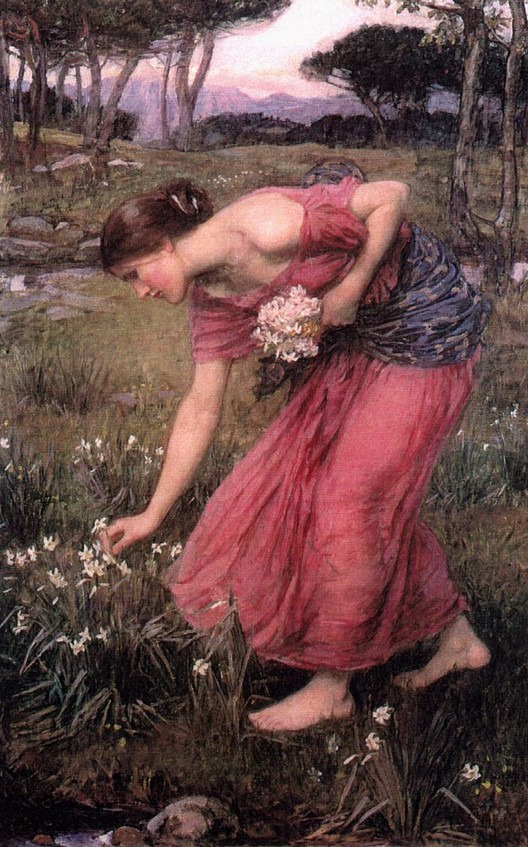
By John William Waterhouse - http://www.jwwaterhouse.com/paintings/images/waterhouse_narcissus.jpg, Public Domain, https://commons.wikimedia.org/w/index.php?curid=8034986
The second myth involves the capture of Persephone by Hades while picking narcissus flowers. Because of this, they're held sacred to Persephone and Hades and they're thought to grow along the River Styx.

By Original uploader was 用心阁 at zh.wikipedia - Transferred from zh.wikipedia; transferred to Commons by User:Shizhao using CommonsHelper., CC BY-SA 3.0, https://commons.wikimedia.org/w/index.php?curid=12462572
Among the Chinese, narcissus is connected to the Chinese New Year and symbolizes good luck, in contrast to the association with death in many Western cultures.
7 notes
·
View notes